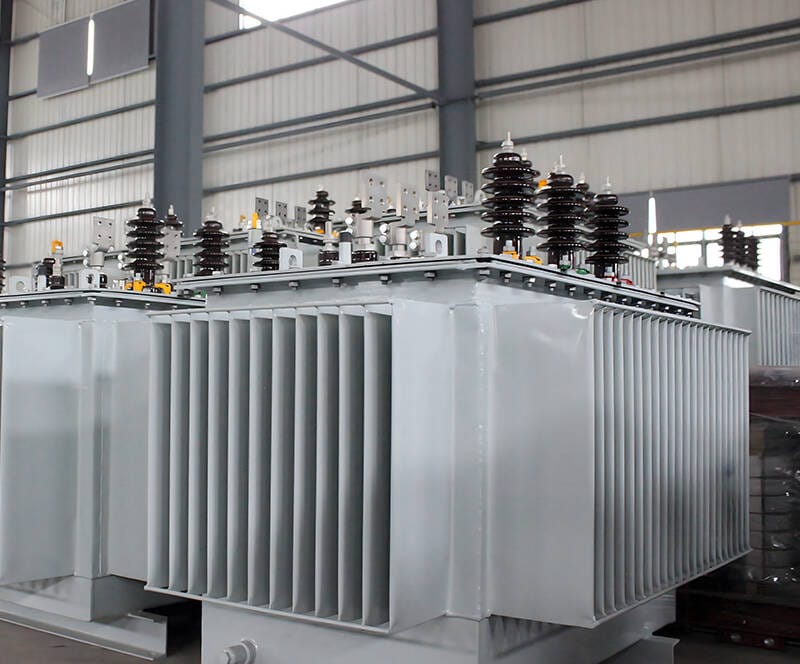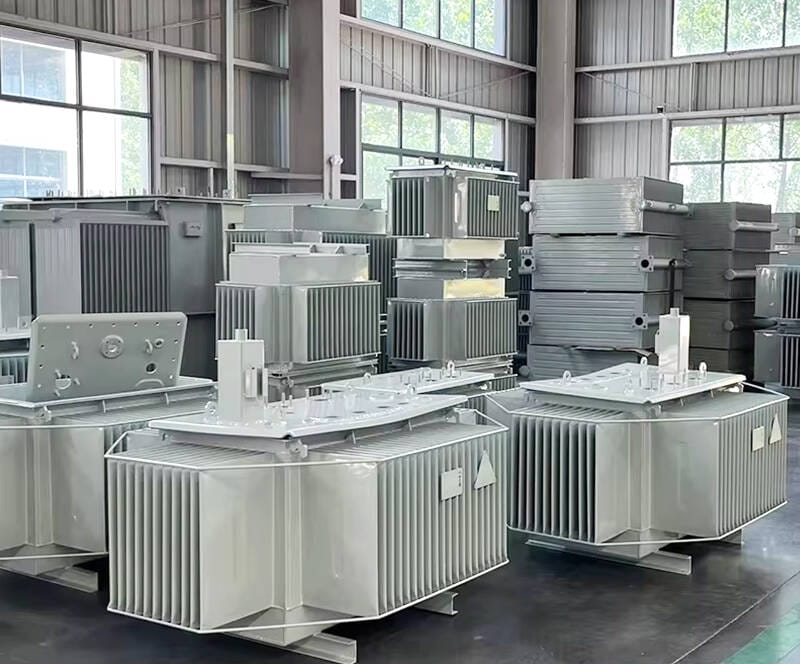Introduction: why box-type substations matter today
A box-type substation transformer — interchangeably called a compact substation, prefabricated substation, or packaged substation — is a factory-assembled unit that contains the transformer, high-voltage (HV) switchgear, low-voltage (LV) distribution panels, protection and metering equipment inside a single weatherproof enclosure. Compared with traditional brick-and-mortar substations, box-type solutions dramatically reduce site work, commissioning time, and visual impact while improving safety and modularity.
Typical deployment scenarios include: urban distribution networks, residential communities, commercial complexes, industrial parks, telecommunications sites, renewable energy plants (PV/wind), and temporary construction power. For renewable projects especially, a compact substation provides a turnkey interface between generation (inverters, turbines) and the utility grid.

Core structure & key components — technical breakdown
A standard box-type substation transformer typically comprises three functional zones (design may vary by vendor and standards):
- High-Voltage (HV) Compartment
- Contains incoming HV switchgear: load break switches, vacuum circuit breakers or SF₆/solid-insulated modules (in IEC designs), lightning arresters, surge protection devices, and HV bushings.
- Purpose: switch, isolate, and protect incoming feeders; provide fault interruption and overvoltage protection.
- Transformer Compartment
- Houses the main distribution transformer: either oil-immersed (ONAN, ONAF cooling) or dry-type (vacuum cast resin, epoxy encapsulated).
- Includes temperature sensors, conservator/tank fittings (for oil types), pressure relief devices, and secondary bushings.
- Purpose: step down medium voltage (MV, e.g., 11/12/15/20/33 kV) to low voltage (LV, e.g., 400/480 V) for final distribution.
- Low-Voltage (LV) Compartment
- Contains LV switchgear: MCCBs, air circuit breakers, distribution busbars, metering transformers (CTs/VTs), protective relays, and outgoing feeder terminals.
- Purpose: distribute power to customer circuits, provide LV protection, metering and control.
Enclosure & Mechanical Features
- Materials: galvanized steel, aluminum-zinc alloy (e.g., Aluzinc), stainless steel for corrosive environments. Powder coating and anti-vandal fastenings for public spaces.
- Mounting: pad-mounted (concrete plinth) or skid/rail for easy transport. Lifting lugs, cable entry glands, drainage, and anti-condensation vents included.
- Thermal design: ventilation louvers, forced ventilation fans, or heat-dissipating fins depending on internal heat load and ambient temperature.
Control & Monitoring
- Modern units can include SCADA interfaces, temperature and oil level sensors, alarm contacts, and remote monitoring — important for PV plants and critical infrastructure.

American-style box-type transformers (Pad-mounted) — in depth Definition & Typical Design
- The American style — often called a pad-mounted transformer — is usually a single, fully enclosed oil-filled tank combining HV switching, transformer core and LV distribution. Equipment meets ANSI/IEEE standards (e.g., C57 series for transformers, ANSI C37 for switchgear).
Key Characteristics
- Integrated oil tank: The HV switchgear (fused cutouts or switch assemblies) is mounted on the same oil-filled enclosure as the transformer core and windings. Oil acts as dielectric and cooling medium.
- Pad mounting: Unit sits on a concrete pad at ground level; all terminations are pad-mounted. Designed for secure outdoor installation with tamper-resistant doors and lockable compartments.
- Underground distribution friendly: Typically used where the distribution network is underground — common in North America to preserve streetscape aesthetics.
- Safety & security: Fully enclosed, no exposed live parts at ground level; fuses and load interrupters accessible only through locked compartments, improving safety in public spaces.
- Simplicity & speed: Factory assembled and pre-tested; minimal on-site assembly and short commissioning time.
Technical pros & cons
- Pros: compact footprint, low site labor, robust protection against weather, cost-effective for standard configurations, lower acoustic emission.
- Cons: limited modularity and customization; inspecting or repairing internal components may require larger tank interventions; oil risks (leakage, fire potential) must be managed with bunding and environmental protection measures.
Typical Specs & Use Cases
- Voltage classes: commonly MV 12.47 kV, 13.2 kV, or other ANSI MV ratings.
- Power range: residential/commercial pads often 25–500 kVA; larger distribution pads 750 kVA–3000 kVA in special designs.
- Used widely in: residential neighborhoods, shopping centers, small commercial sites, and distributed PV/BESS projects in North America.

European-style box-type transformers (Modular/Compartmentalized) — in depth Definition & Typical Design
- The European style (IEC oriented) separates HV switchgear, transformer tank, and LV switchgear into distinct compartments within the same overall enclosure. Units comply with IEC standards (e.g., IEC 60076 for transformers, IEC 62271 for switchgear).
Key Characteristics
- Three-chamber separation: physical partitioning improves personnel safety during maintenance (one chamber can be worked on while others remain energized, with proper procedures).
- Flexible switching options: switchgear may be vacuum, gas-insulated, SF₆-free solid dielectric modules, or metal-enclosed switchgear with withdrawable units.
- Dry-type compatibility: Easier to accommodate dry-type transformers when fire codes or indoor installations require non-oil solutions.
- High customization: Cable glands, relay systems, relaying schemes (feeder protection, differential protection), and auxiliary systems tailored to client specs.
Technical pros & cons
- Pros: excellent maintainability, flexible equipment choices, safer for indoor or fire-sensitive sites, easier to upgrade (swap LV panels, add automation).
- Cons: larger footprint for equivalent kVA in some layouts, potentially higher initial engineering/assembly time and cost.
Typical Specs & Use Cases
- Voltage classes: IEC MV levels such as 10 kV, 11 kV, 20 kV, 33 kV.
- Power range: broad — from small 50 kVA units to multi-MVA compact substations.
- Common in: European urban grids, industrial plants, utility substations, data centers, large PV plants and wind farms where IEC standards apply.

Side-by-side technical comparison (detailed)
Below is a practical view engineers and procurement teams use when choosing:
- Standards & Compliance
- American: ANSI/IEEE; utility practices in North America/Latin America.
- European: IEC; used across Europe, Middle East, Africa, and many Asian countries.
- Transformer Medium
- American: typically oil-immersed (ONAN/ONAF).
- European: oil-immersed or dry-type options common.
- Maintenance Approach
- American: sealed design — low routine maintenance; major servicing often requires tank lifting/emptying.
- European: compartmentalized — component-level servicing; easier to replace switchgear or LV units.
- Fire & Environmental Risk
- American: manage oil containment (bunds), use of low-flammability oils is possible.
- European: dry-type reduces fire risk; many designs avoid oil for indoor sites.
- Customization & Future-Proofing
- American: standardized, quicker delivery for typical loads.
- European: modular, easier to add automation, monitoring, communication (SCADA/IEC 61850).
- Installation & Site Constraints
- American: ideal for underground cable networks and constrained streetscapes.
- European: better where staged installation, accessibility, or indoor placement required.
How to choose: decision checklist and procurement guidance
When deciding between an American pad-mounted unit and a European modular box-type substation, evaluate:
- Regulatory & Utility Requirements
- Check local utility interconnection standards (ANSI vs IEC), earthing practices, and inspection codes.
- Installation Environment
- Outdoor public space with underground cables → pad-mounted (American) often preferred.
- Indoor, high-fire-risk, or industrial site needing compartmental access → European modular or dry-type.
- Maintenance Capability
- If operations team prefers “fit-and-forget” with minimal site servicing → American.
- If frequent testing, easy relay swaps, or staged upgrades needed → European.
- Reliability & Redundancy Needs
- High-availability sites (data centers) may require redundant feeders, multi-section bus, and sophisticated protection — favor modular designs.
- Environmental & Safety Constraints
- Sensitive environments (near water bodies) or strict fire codes → consider dry-type modular or oil containment systems and biodegradable ester fluids for oil units.
- Budget & Lead Time
- Standard pad-mounts: lower CAPEX and faster lead times for common ratings.
- Customized modular substations: higher initial engineering cost but lower lifecycle cost for complex projects.
Procurement Tip: request detailed factory test reports (FAT), type test certificates (IEC/ANSI as applicable), short-circuit impedance data, vector group, temperature rise tests, and routine tests (insulation resistance, turns ratio) — especially for renewable integrations.
Ready to deploy a reliable power solution? Contact our experts today for a customized quote.
Practical examples & case studies (short)
- Residential subdivision (North America): pad-mounted transformer, 250 kVA, 13.2 kV/480 V, fused primary — chosen for small footprint and aesthetics.
- Industrial park (Europe): modular box-type 2 MVA compact substation, 33 kV primary, dry-type windings inside separate transformer room — chosen for maintainability and fire safety.
- Solar PV plant (utility-scale): modular substation with remote monitoring, OLTC (on-load tap changer), and MV switchgear rated to 33 kV — chosen for scalability and grid code compliance.
Maintenance, lifecycle and environmental considerations
- Routine checks: temperature profiles, oil sampling (if oil), IR thermography of busbars, mechanical operation of switches, and relay testing.
- Preventive maintenance: scheduled oil testing (BDV, moisture content, dissolved gas analysis), bushings inspection, anti-corrosion treatment.
- End of life & recycling: responsible disposal of insulating oil, recycling of copper and steel. Consider design choices that reduce environmental footprint — e.g., biodegradable ester oils or dry-type transformers.
- Smart upgrades: retrofit meters, communication modules (IEC 61850), condition monitoring sensors to enable predictive maintenance.
Conclusion — practical recommendation
- Choose American pad-mounted when you need a compact, low-maintenance, fast-deploy solution compatible with ANSI practices and underground distribution networks.
- Choose European modular when you require flexibility, easy maintenance, dry-type options, IEC compliance, and future-proof upgradeability.
For most projects, balance technical standards, site safety, environmental rules, and lifecycle cost — and request detailed technical dossiers and FAT reports before procurement.



